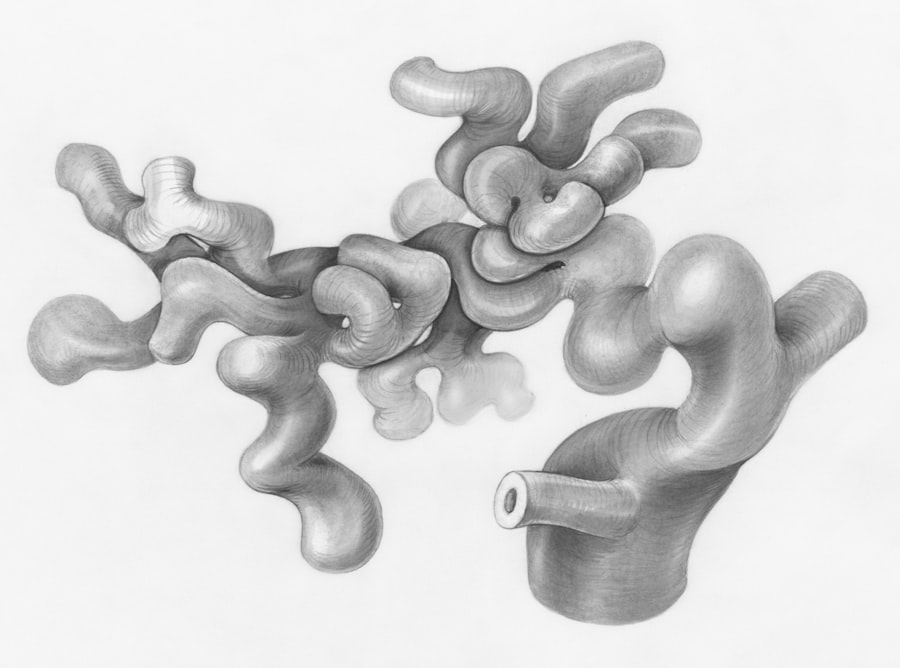In 1901, a group of Greek sponge divers stumbled upon a remarkable find off the coast of Antikythera, a small island in the Aegean Sea. Among the treasures retrieved from a sunken Roman shipwreck was a corroded bronze artifact that would later be recognized as the Antikythera Mechanism. Initially, the significance of this object was not fully understood; it was merely one of many items recovered from the depths of the sea.
However, as scholars began to examine the device, its complexity and sophistication became apparent, leading to a reevaluation of ancient technological capabilities. The Antikythera Mechanism is often hailed as the world’s first analog computer, a title that underscores its groundbreaking nature. The device consists of a series of gears and dials, intricately designed to track celestial movements and predict astronomical events.
Its discovery not only shed light on the technological prowess of ancient civilizations but also raised questions about the extent of their scientific knowledge. As researchers delved deeper into its construction and purpose, they uncovered a wealth of information that would challenge long-held assumptions about the capabilities of ancient Greek engineers. Here is the link to the Antikythera Mechanism documentary: Antikythera Mechanism documentary.
Key Takeaways
- The Antikythera Mechanism, an ancient Greek analog computer, was discovered in a shipwreck off the coast of Antikythera in 1901.
- Researchers have been working to uncover the purpose of the Antikythera Mechanism, with theories ranging from astronomical calculations to predicting eclipses.
- The intricate design and functionality of the Antikythera Mechanism have astounded scientists, showcasing advanced technology for its time.
- The Antikythera Mechanism’s advanced technology signifies the ancient Greeks’ understanding of astronomy and mechanical engineering.
- The relationship between the Antikythera Mechanism and astronomy highlights its significance in understanding ancient astronomical knowledge and technology.
Unraveling the Mystery of its Purpose
The purpose of the Antikythera Mechanism has intrigued historians and scientists alike for over a century. Initially thought to be a simple navigational tool, further analysis revealed its true complexity. The device was designed to calculate and display various astronomical phenomena, including the positions of celestial bodies, lunar phases, and even eclipses.
This multifaceted functionality suggests that it served not only as a scientific instrument but also as an educational tool for those interested in astronomy. Researchers have proposed several theories regarding the specific applications of the Antikythera Mechanism. Some suggest it was used by astronomers to predict celestial events for agricultural purposes, while others believe it may have had religious significance, helping to determine important dates in the ancient calendar.
The intricate engravings on its surface, which include inscriptions related to celestial cycles, further support the notion that it played a crucial role in understanding the cosmos. As scholars continue to study its components, they uncover new insights into how ancient civilizations perceived their place in the universe.
The Intricate Design and Functionality

The design of the Antikythera Mechanism is nothing short of extraordinary. Comprising at least 30 interlocking gears, this ancient device showcases an advanced understanding of mechanical engineering that was previously thought to be unattainable for its time. The arrangement of these gears allows for precise calculations of celestial movements, demonstrating a level of sophistication that would not be seen again until the development of similar devices in the Middle Ages.
Each gear within the mechanism serves a specific function, working in harmony to produce accurate readings. For instance, one set of gears is responsible for tracking the lunar cycle, while another calculates the solar year. The device also features a dial that indicates the position of the five known planets at the time: Mercury, Venus, Mars, Jupiter, and Saturn.
This intricate interplay between gears and dials exemplifies not only the ingenuity of ancient Greek engineers but also their deep understanding of astronomy and mathematics.
The Significance of its Advanced Technology
| Technology | Significance |
|---|---|
| Artificial Intelligence | Enhances decision-making processes |
| Big Data Analytics | Provides insights for strategic planning |
| Internet of Things (IoT) | Improves operational efficiency |
| Blockchain | Secures transactions and data |
The Antikythera Mechanism stands as a testament to the advanced technology of ancient Greece, challenging modern perceptions of historical progress.
The ability to create such a sophisticated device indicates a high level of scientific inquiry and technological innovation during this period.
Moreover, the mechanism’s existence raises important questions about the transmission of knowledge across cultures and time periods. It serves as a reminder that technological advancements are often built upon previous discoveries, and that ancient societies were capable of remarkable achievements long before the Renaissance. The Antikythera Mechanism not only highlights the ingenuity of its creators but also invites further exploration into how such knowledge may have influenced subsequent generations.
The Relationship Between the Antikythera Mechanism and Astronomy
The relationship between the Antikythera Mechanism and astronomy is profound and multifaceted. This ancient device was designed specifically to model celestial phenomena, making it an invaluable tool for astronomers of its time. By accurately predicting lunar phases and solar eclipses, it allowed users to align their agricultural practices with celestial events, thereby enhancing their understanding of seasonal cycles.
Furthermore, the mechanism’s ability to track planetary movements reflects an advanced comprehension of celestial mechanics. Ancient Greek astronomers were already grappling with complex concepts such as retrograde motion and planetary alignment, and the Antikythera Mechanism provided them with a tangible means to visualize these phenomena. This connection between technology and astronomy underscores the importance of observational science in ancient Greece and highlights how such tools contributed to humanity’s ongoing quest for knowledge about the universe.
The Antikythera Mechanism’s Influence on Modern Technology

The influence of the Antikythera Mechanism extends far beyond its own time period; it has left an indelible mark on modern technology. As one of the earliest examples of a mechanical computer, it laid the groundwork for future innovations in engineering and design. The principles behind its gear systems can be seen in various modern devices, from clocks to complex machinery used in contemporary engineering.
Moreover, the study of the Antikythera Mechanism has inspired modern scientists and engineers to explore ancient technologies further. By examining how ancient civilizations approached problem-solving and design challenges, contemporary innovators can glean insights that may inform their own work. The mechanism serves as a bridge between past and present, illustrating how ancient ingenuity continues to resonate in today’s technological landscape.
The Cultural and Historical Context of the Antikythera Mechanism
To fully appreciate the significance of the Antikythera Mechanism, one must consider its cultural and historical context. Created during a time when Greek civilization was flourishing, this device reflects the intellectual spirit of an era marked by advancements in philosophy, mathematics, and science. The pursuit of knowledge was highly valued in ancient Greece, and this ethos is embodied in the creation of such an intricate instrument.
Additionally, the mechanism’s discovery within a Roman shipwreck highlights the interconnectedness of cultures during this period. It serves as a reminder that knowledge was not confined to one civilization but rather shared across borders through trade and exploration. The Antikythera Mechanism stands as a symbol of this cultural exchange, illustrating how ideas about astronomy and technology transcended geographical boundaries.
The Remarkable Engineering of the Antikythera Mechanism
The engineering behind the Antikythera Mechanism is nothing short of remarkable. Its construction required not only advanced mathematical knowledge but also exceptional craftsmanship. The precision with which each gear was manufactured speaks volumes about the skills possessed by ancient artisans.
This level of detail is particularly impressive given that it predates similar mechanical devices by over a millennium. The use of bronze as a primary material also reflects an understanding of metallurgy that was advanced for its time. The corrosion observed on the mechanism today provides insight into both its age and durability; despite being submerged for centuries, much of its intricate design remains intact.
This resilience is a testament to both the quality of materials used and the expertise involved in its creation.
The Key Players in Deciphering the Antikythera Mechanism
The journey to deciphering the Antikythera Mechanism has involved numerous key players over the years. Early efforts were made by archaeologists who first examined the artifact after its discovery; however, it wasn’t until modern imaging techniques were developed that significant progress was made in understanding its function. Researchers like Derek J.
In recent years, advancements in technology have allowed for even deeper investigations into the mechanism’s workings. X-ray imaging and 3D modeling have provided unprecedented insights into its internal structure, enabling scientists to reconstruct its original functionality with greater accuracy than ever before. This collaborative effort among historians, engineers, and scientists exemplifies how interdisciplinary approaches can yield new discoveries about ancient technologies.
The Legacy of the Antikythera Mechanism
The legacy of the Antikythera Mechanism is profound and enduring. It has become an emblematic representation of human ingenuity and curiosity about the cosmos. As one of history’s earliest known computers, it challenges contemporary notions about technological development and encourages a reevaluation of what constitutes progress in engineering.
Moreover, its story continues to inspire new generations of scientists and historians who seek to uncover more about ancient civilizations’ contributions to knowledge and technology. The ongoing research surrounding this remarkable artifact serves as a reminder that there is still much to learn from our ancestors’ achievements.
The Continued Research and Study of the Antikythera Mechanism
Research into the Antikythera Mechanism remains active and vibrant today. Scholars continue to explore its intricacies using cutting-edge technology to unlock further secrets hidden within its gears. Each new discovery adds depth to our understanding not only of this specific artifact but also of ancient Greek society’s broader scientific endeavors.
As interest in this ancient device grows, so too does its relevance in discussions about technology’s evolution over time. The Antikythera Mechanism stands as a bridge between past innovations and contemporary advancements, reminding humanity that curiosity about our universe has always driven progress forward. Through continued study and exploration, researchers hope to illuminate even more aspects of this extraordinary artifact’s history and significance in shaping our understanding of science and technology today.
The Antikythera mechanism, often regarded as the world’s first analog computer, is a fascinating artifact that showcases the advanced engineering skills of ancient Greece. For a more in-depth exploration of this remarkable device and its historical significance, you can read a related article on the topic at XFile Findings. This resource provides a simplified explanation of how the mechanism worked and its implications for our understanding of ancient technology.
WATCH THIS! The Antikythera Mechanism Is Not Human Tech
FAQs
What is the Antikythera Mechanism?
The Antikythera Mechanism is an ancient Greek analog computer and orrery used to predict astronomical positions and eclipses for calendrical and astrological purposes.
When was the Antikythera Mechanism discovered?
The Antikythera Mechanism was discovered in 1901 in the Antikythera shipwreck off the coast of the Greek island of Antikythera.
How old is the Antikythera Mechanism?
The Antikythera Mechanism is estimated to be around 2,000 years old, dating back to the 1st or 2nd century BCE.
What is the significance of the Antikythera Mechanism?
The Antikythera Mechanism is considered one of the most important archaeological discoveries as it demonstrates the advanced technological knowledge of ancient Greeks in the fields of astronomy and engineering.
How does the Antikythera Mechanism work?
The Antikythera Mechanism uses a system of gears and dials to track the movements of the sun, moon, and planets, as well as predict eclipses and other astronomical events.
Where is the Antikythera Mechanism currently located?
The remains of the Antikythera Mechanism are housed in the National Archaeological Museum in Athens, Greece.
